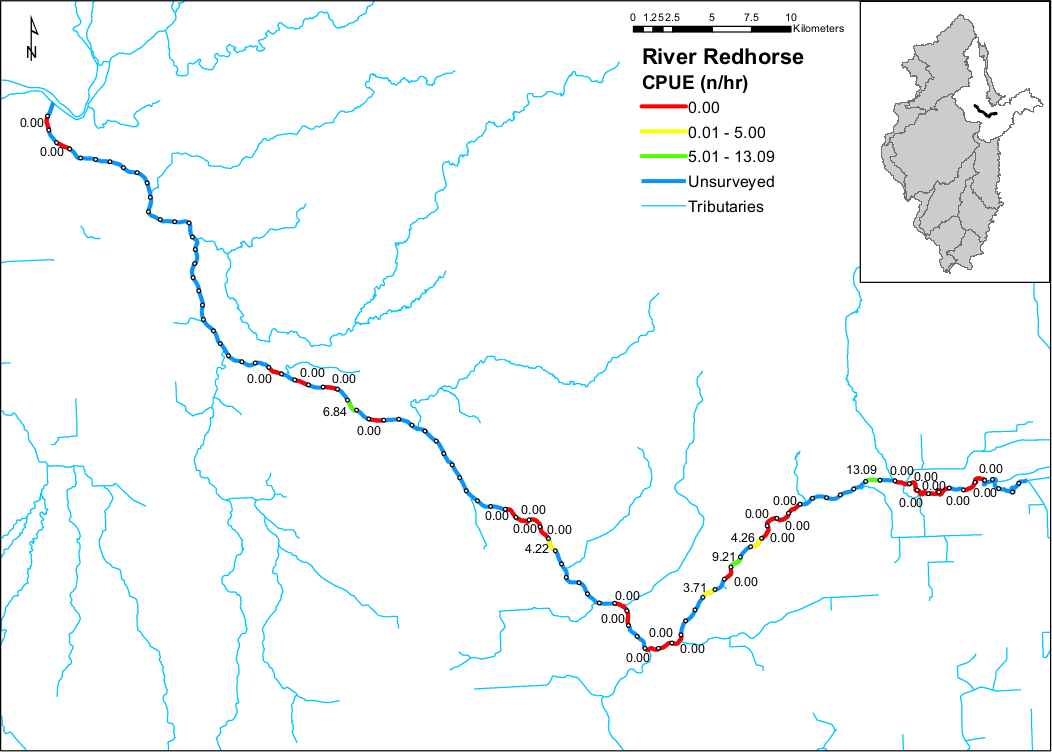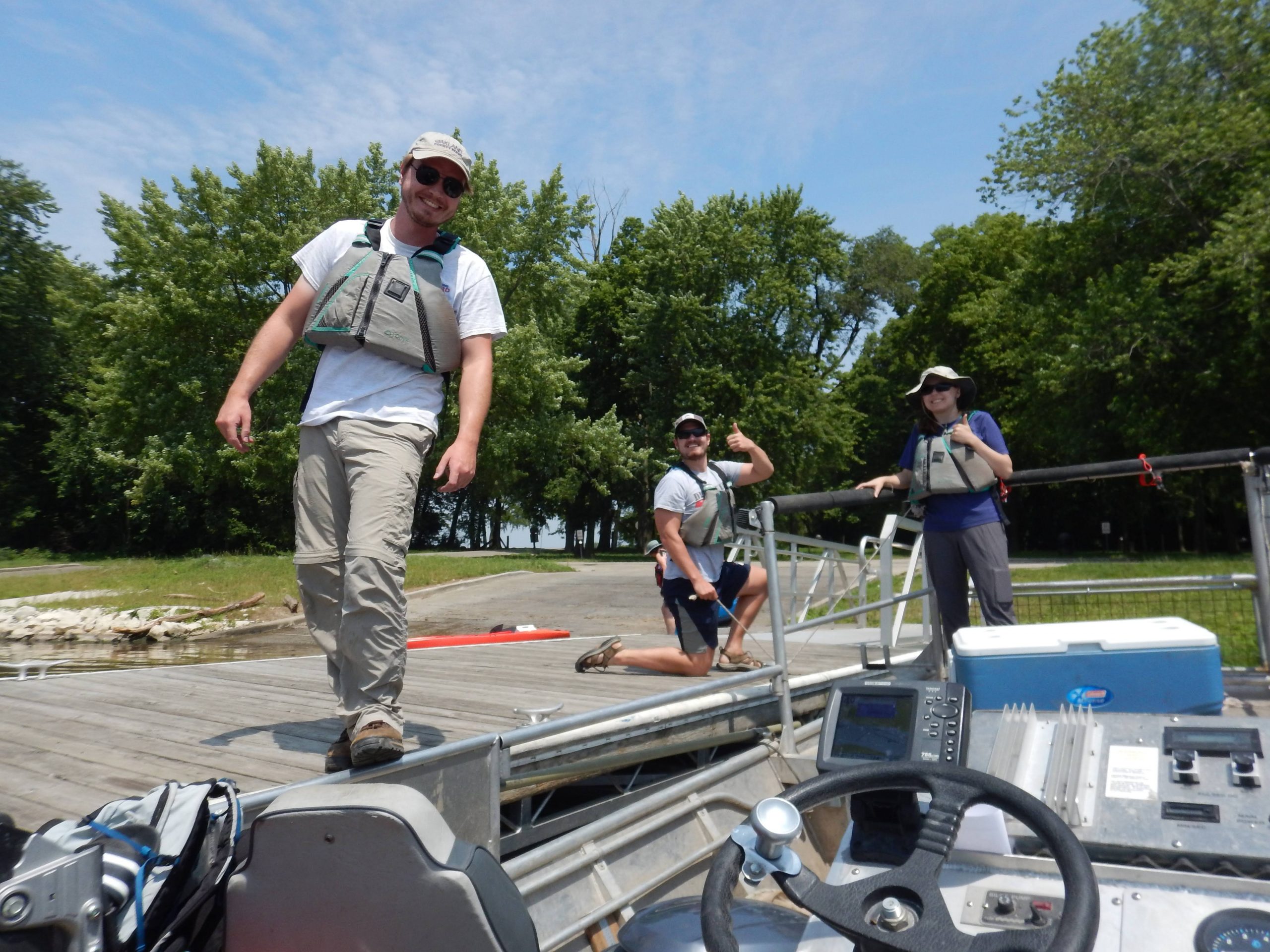Assessing Population Viability of River Redhorse in Illinois Running Waters

The River Redhorse, Moxostoma carinatum (Cope, 1870), was recorded in the Wabash River, Indiana. There are many references describing and documenting this species under multiple scientific names. Jenkins (1970) has recorded a long list of these in his doctoral dissertation studying the variation of individuals in the tribe Moxostomatini. Jenkins was the first to take a hard look at this group of fishes and sort them out as species based on morphology and phylogeny without genetic tests. River Redhorses have a wide distribution in the Mississippi River and Great Lakes drainages but are usually rare when detected. In Illinois, it is found in deeper medium-sized rivers with fast flow and riffle areas. The Kankakee River contains the largest population of River Redhorse in Illinois. It has also been found in the Iroquois, Vermilion (Wabash), Fox, Illinois, Vermilion (Illinois), Mazon, Kaskaskia and Rock river basins historically.
River Redhorse have their most detected population in Illinois in the Kankakee River. We surveyed 32 areas in the Kankakee River from the state-line to the confluence as shown below.

Data collected while surveying included:
-
- Pulsed-DC boat electroshocking of the redhorse community
- Species ID and count
- Length and weight
- Fin rays were collected from River Redhorse for aging
- Location and depth were recorded for Redhorse captures
- Fin clips were administered to detect re-captures
- Pulsed-DC boat electroshocking of the redhorse community
-
- Habitat measurements at each site
- Flow
- Depth
- Off-channel habitat
- Habitat measurements at each site
-
- Water quality measurements at each site
- Dissolved Oxygen
- pH
- Conductivity
- Temperature
- Water clarity
- Water quality measurements at each site

We captured all redhorse, identified individuals to species, sampled each, and fin clipped individuals that were counted. We collected fin rays from the River Redhorse captured to process for aging in the lab. In addition to our data, we will also incorporate the Long-term Electrofishing (LTEF) program and the Illinois Department of Natural Resource basin survey data to develop a habitat suitability model. The LTEF program has also imaged the Kankakee River substrate with side scan sonar and processed the images to describe the substrate types from the state-line to the confluence.



